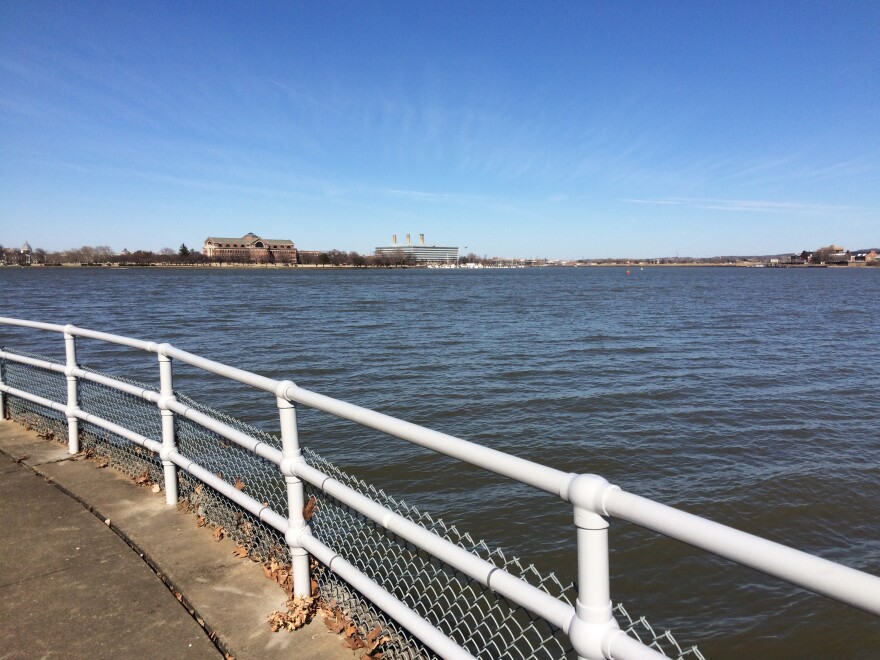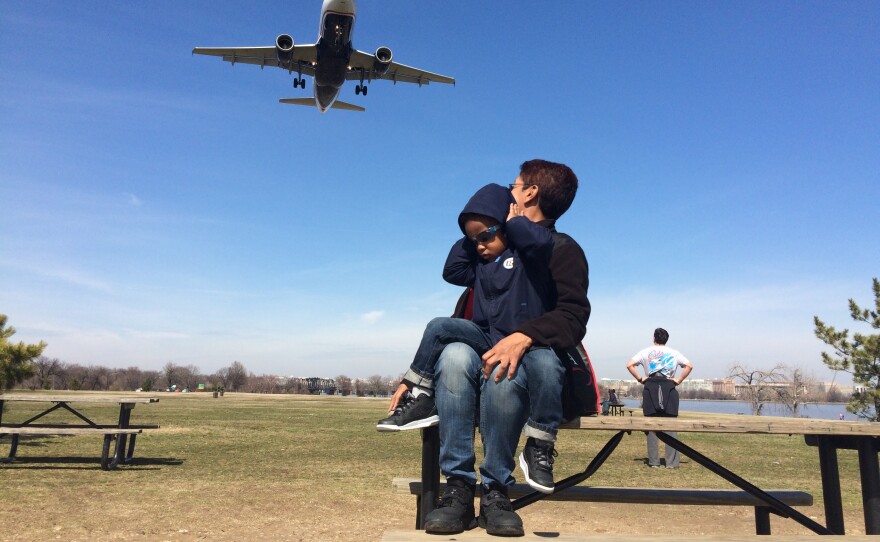If you’ve ever flown into Reagan National Airport in Washington DC, your plane followed the course of the Potomac River and past two places with special significance to aviation history in the nation’s capital. Aviation commentator Paul Glenshaw takes us there.
I’m standing at a place called Gravelly Point, alongside the Potomac River, and right at the end of Reagan National Airport’s runway 19. This is a place where you can come and get the thrill of flying with your feet firmly planted on the ground. There’s always people here to watch the planes. I chatted with several of them about why they were there. First up, Carol Scaver, who is sitting on a picnic table with a little boy in her lap.
"My grandson is three, he’s crazy about airplanes, and when the weather’s nice, we come here as often as we can," she says. "It’s a fun place to come watch the planes take off and land, right over your head. You get a real feeling—you feel the vibrations of the engines when they come in."

There was also a trio of young adults sitting on a little hill—the closest they could get to the runway. I had to know why they were sitting with their backs to the incoming planes.
"I like to be surprised [laughs]," says Arye Singer. Her friend Lauren Camara says that they don't looking back at the planes.
Then I had the pleasure of meeting three little girls and their dad: Dale, Marayah, Lelani and Samayah Seward – for all of them, it was their first visit.
"I drive by it every day coming from work, but I actually decided to stop by today to let them see it, ‘cause, they love airplanes," said Dale.
Since it was their first visit, I had them stand with their backs to the next landing airliner.
"It’s getting louder, it’s getting louder, it’s getting close, it’s getting close!" squealed the girls who shrieked and laughed after the plane passed overhead.

But none of the folks I spoke to knew about the other important aviation history site, just across the river.
I’m standing at the tip of Hains Point, a peninsula at the confluence of the Anacostia and Potomac Rivers. If I look up the Anacostia, I can see the Army War College at Fort McNair. And it was right here, in December 1903, that Samuel Pierpont Langely attempted to fly his Grand Aerodrome, with his brilliant assistant Charles Manly at the controls. The aircraft was launched off its houseboat platform. Manly heard a grinding noise as it went down its 60-foot track. It reared up into the air, hovered for a moment, and then fell backward into the icy water. Manly barely escaped with his life.
Nine days later, on December 17, 1903, the Wright brothers flew at Kitty Hawk. Even though Langley had successfully flown large models as early as 1896, the disaster in Washington ended his career. Manly swore for the rest of his life that the Aerodrome could have flown. Modern consensus is that it was structurally unsound, and incapable of flight.
But standing within eye and earshot of Gravelly Point, one gets a strong sense of what it takes to dream big. Sometimes, it means risking everything. The future that Langely and Manly may have imagined has come true. We’re living it today.
Back at Gravelly Point, I share Langely’s story and ask what Langley might think of flight today.
"I don’t know," says Bobbie Dietrich. "He’d probably be speechless at how far we’ve come."
So the next time you come to Washington, be sure to visit Gravelly Point, and give a wave across the river for all who dream big.
Paul Glenshaw writes about aviation and space.
Aviation programming on WYSO is supported in part by the National Aviation Heritage Alliance and The Air Force Museum Foundation.






